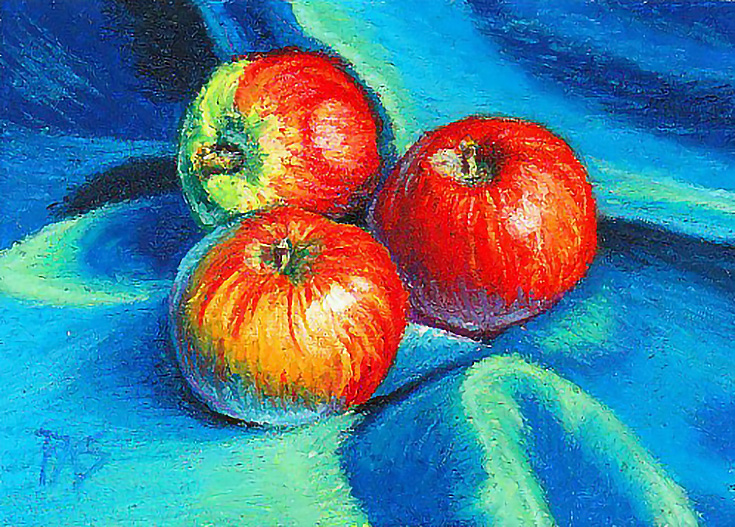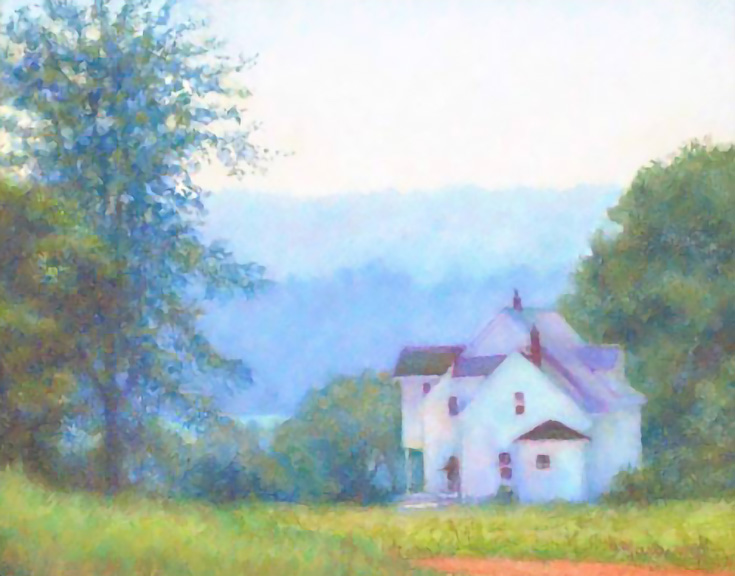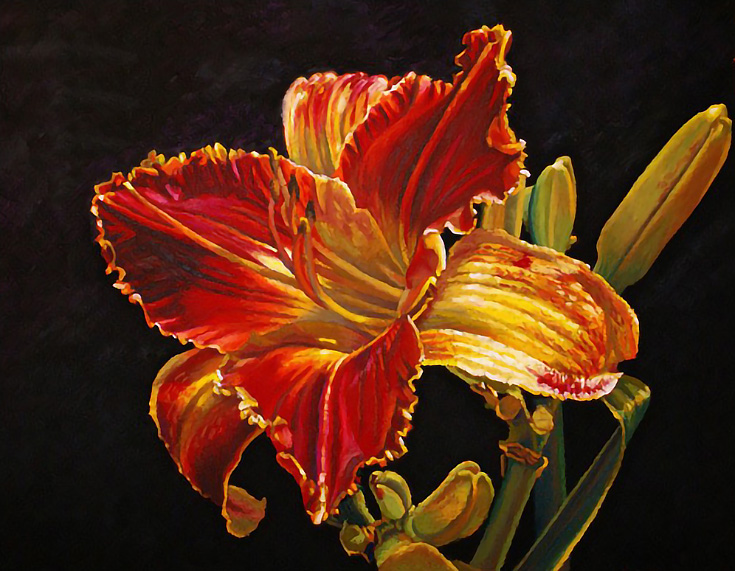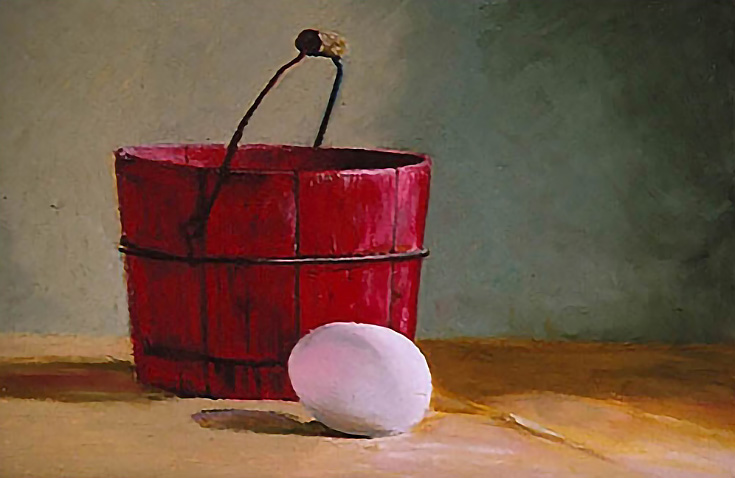10 Oil Pastel Techniques & Tips To Help You Get Better FAST
10 Oil Pastel Techniques & Tips To Help You Get Better FAST
This post may contain affiliate links. We may receive a commission on products purchased through these links. To read how this site makes money click here.

From the onset, oil pastels look like and incredibly easy medium to master.
Afterall, how complex can a stick of pigment and binder really be?!
As simple as oil pastels may look – this medium is extremely difficult to master.
Even those artists that come from a background in the ancient mediums of oil painting can quickly get tripped up on how this particular medium interacts with the surface.
Simply put…
…there is no other medium quite like oil pastels.
But if you just got a new set of top-rated oil pastels and are looking to expand your creativity, we wanted to put together this guide to help you out on your journey.
After employing some of the techniques used by artists featured in many of the videos below, you will begin to stretch your creative limits even further.
So, buckle in and let’s get started on learning more about beginner, intermediate, and advanced oil pastel techniques:
Table of Contents
10 Oil Pastel Techniques by Sakura of America
In this video Mr. Otter Studio goes over various blending techniques you can use with oil pastels which include blends between the following:
- Color + white
- Color + gray
- Color + black
- Color + white + black
But beyond the blending that the artist goes over, you will also learn about varying pressures with your pastels (and the results you will see), as well as effects (which include stippling, scrumbling, and sgraffito).
After watching the entire tutorial, you should have a better understanding on how you can use your oil pastels a bit differently going forward.
6 Oil Pastel Techniques by Jackie Ruzicka
Very similar in nature to the video mentioned above, this oil pastel technique video by Jackie is broken out into 6 sections to help demonstrate on how to use your oil pastels a bit better.
In this video Jackie goes over the following techniques:
- Blending
- Layering
- Short Strokes
- Long Strokes
- Pointillism
- Drawing
The video quality on this one is a fair bit clearer than the one made by Sakura, so those following along at home should have no problem seeing the details that Jackie lays down on the oil pastel paper.
The Basics Of Oil Pastels by Lets Create Something
I really liked this video because it’s dead simple and requires you to get your hands dirty.
Here we will see how even the cheapest of oil pastels can still make for breathtaking results (a mantra repeated here all the time that its practice not the price of supplies that matter).
In the video you get to see how both a flower and whale are made by only a few oil pastels that are also blended with the tips of your fingers.
For those who like to skip ahead and get to the good stuff – the drawing part of the video starts at the 1:55 mark.
How To Dilute Oil Pastels
One thing that many artists tend to forget when working with oil pastels is that they are…well…made from oil!
As any oil painter will tell you, manipulating this medium is rather easy when you use the right solvents.
Here Gene Shaw walks us through how he will thin out an oil pastel drawing with simple paint thinner.
Now as a word of caution here – Gene uses hardware store paint thinner, which is really bad as contains a bunch of impurities.
Therefore, if you want to employ his technique we would recommend reading our odorless mineral spirits and turpentine post where we talk about why these are so different from your hardware store paint thinners.
Regardless of the solvent used, the results will be nearly identical (and much safer when using artist grade thinners).
Rule of 3s by Patrick Neumann
We mentioned this video once on our site before, but we really think it’s worth mentioning again. Here Patrick walks us through his technique when it comes to color selection with oil pastels.
He likes to employ what’s called the Rule of 3’s – selecting three colors from the same family and using them in your artwork.
This creates an analogous set of colors that will help your artwork appear more natural. It’s worth taking a look at this video fully to see these great little nuggets of information that Patrick shares with us.
Oil Pastel Speed Painting by Ellie Fine Art
Sometimes we don’t want to sit around and watch a lengthy tutorial with some artist telling you what they did every step of the way…
…and that’s completely ok!
I personally get a bit antsy about it sometimes too!
Anyhow, here is a speed painting by Ellie of a beautiful Bald Eagle that’s only 3:03 in duration.
Here you can see the various techniques and tricks she uses in her artwork to develop layers, highlights and more.
Impasto Landscape – Oil Pastel Painting Lesson by Madhubala Arts
Opposite of the speed painting mentioned above, here is a real time oil pastel painting by Madhubala that finishes into a breathtaking piece.
In all honestly, from seeing the video thumbnail initially, I thought this was an oil painting and the title of the video was incorrect.
But after watching the video, I was struck by the level of detail that the artist was able to achieve in this piece.
If you are interested in developing layers and want to blur the lines between oil pastels and oil paintings, check out this video, you won’t be disappointed.
Baby Oil & Oil Pastels by Trista
While we saw earlier an artist use a solvent to breakdown the bonds between the oil and pigment within oil pastels (see: how to dilute oil pastels), in this video Trista takes the opposite approach and uses baby oil to extend oil pastels.
When mixing a bit of baby oil on a Q-Tip or paint brush, you can begin to brush out or extend the oil pastel to look much smoother in your artwork – and ultimately achieve a painterly like effect.
While the above video is 5:49 long, if you want to only see the part with baby oil application, skip ahead to the 3:49 mark where she begins applying it to the blue reflection of the apple.
Oil Pastel Tutorial – Parrot – by Mr. Otter Art Studio
The same artist that was featured in our first oil pastel technique video (see: 10 Oil Pastel Techniques by Sakura of America), in this video the artist goes over the reverse scratch method by transferring and transforming an ink drawing into a beautiful oil pastel piece.
It’s a creative method that the artist employs and one that is hard to put into words!
But if you are looking for a way to expand your creativity and to push yourself as an artist, check out the video above – you won’t be disappointed!
Galaxy Drawing with Oil Pastels by Deepak
Everyone loves a good galaxy painting, especially one made of oil pastels. In this video Deepak allows us to look over his shoulder as he demonstrates his method to creating a starry galaxy with oil pastels.
While the subject itself is captivating, what we really enjoyed, and the reason for its inclusion, is the techniques that artist uses throughout the creation of this piece.
Normally you would think with painting, the initial wash must go down first, but quite the opposite is happening here.
With a bit of masking tape magic, you can see how the artist is able to make the colors of the planets really jump off the page. But it doesn’t end with masking tape, check out the video to see some of the other slick techniques he uses.
Push The Limits With Oil Pastels
If there is any underlying theme of the above videos that we selected it’s that you must always push the bounds with oil pastels.
As we mentioned at the start of this article, oil pastels are notoriously hard to master.
So, take notes of the videos above, but don’t think that this is the end all be all when it comes to this medium.
Furthermore, we always want to emphasize time and time again that the supplies don’t matter as much as the artist holding the medium.
The biggest way to improve as an artist isn’t to buy professional grade supplies, but instead to get into the studio and practice regularly.
While it may seem frustrating and hopeless at times, know that with regular practice you will truly unlock the joys of creating beautiful pieces of art!

 Have you been itching to try a new media recently? Ignite’s
Have you been itching to try a new media recently? Ignite’s  There are a lot of different techniques that go into a pastel painting—they are outlined in the books provided in our maker kits, but here’s my quick rundown of necessary ones:
There are a lot of different techniques that go into a pastel painting—they are outlined in the books provided in our maker kits, but here’s my quick rundown of necessary ones:







Comments
Post a Comment